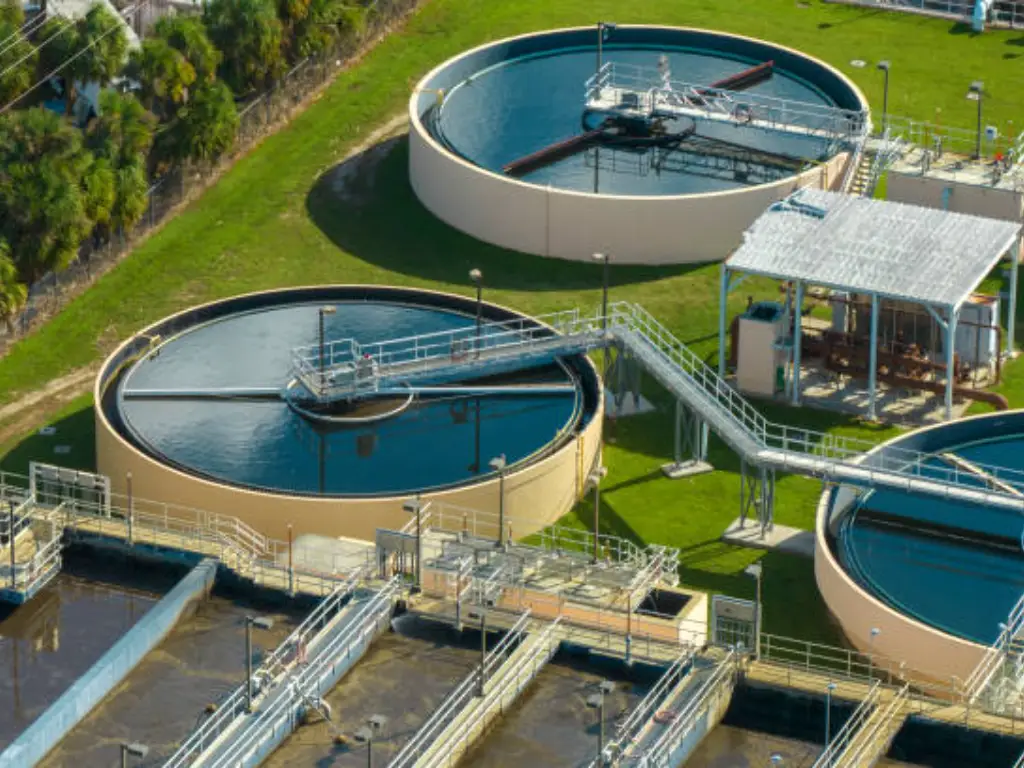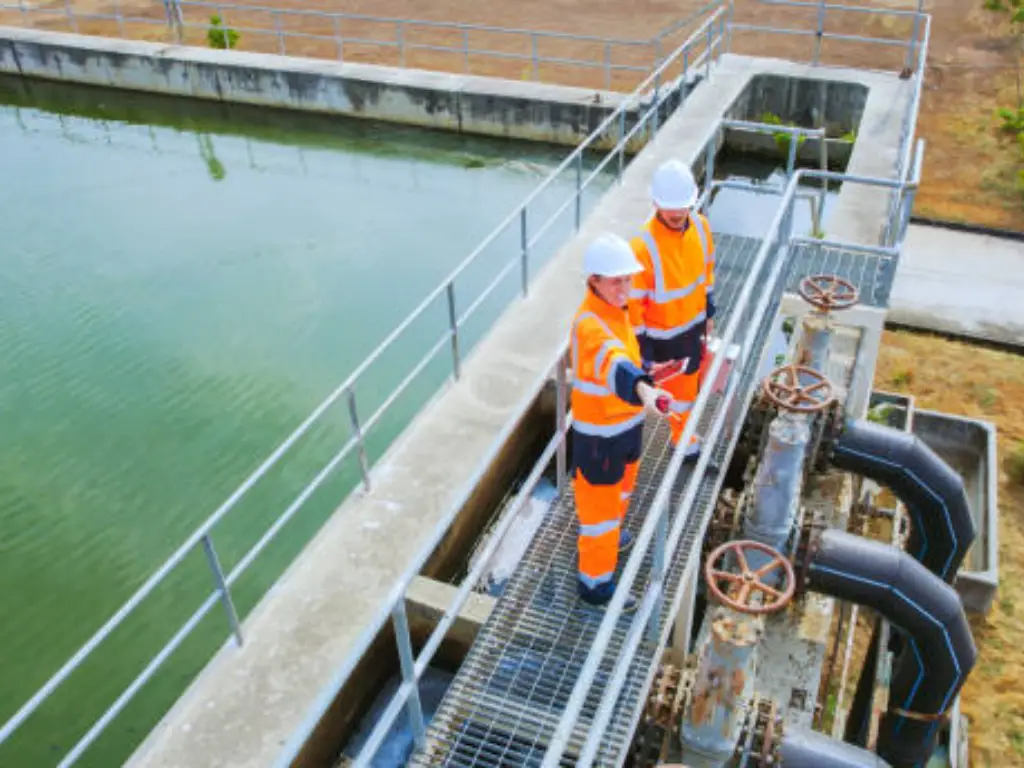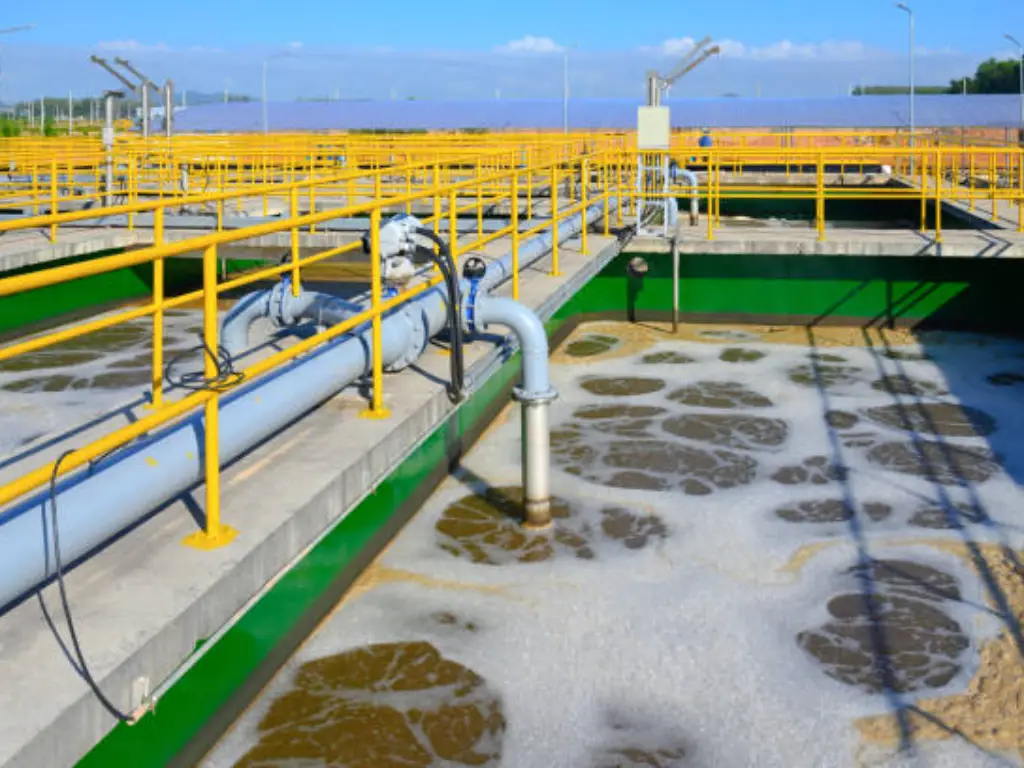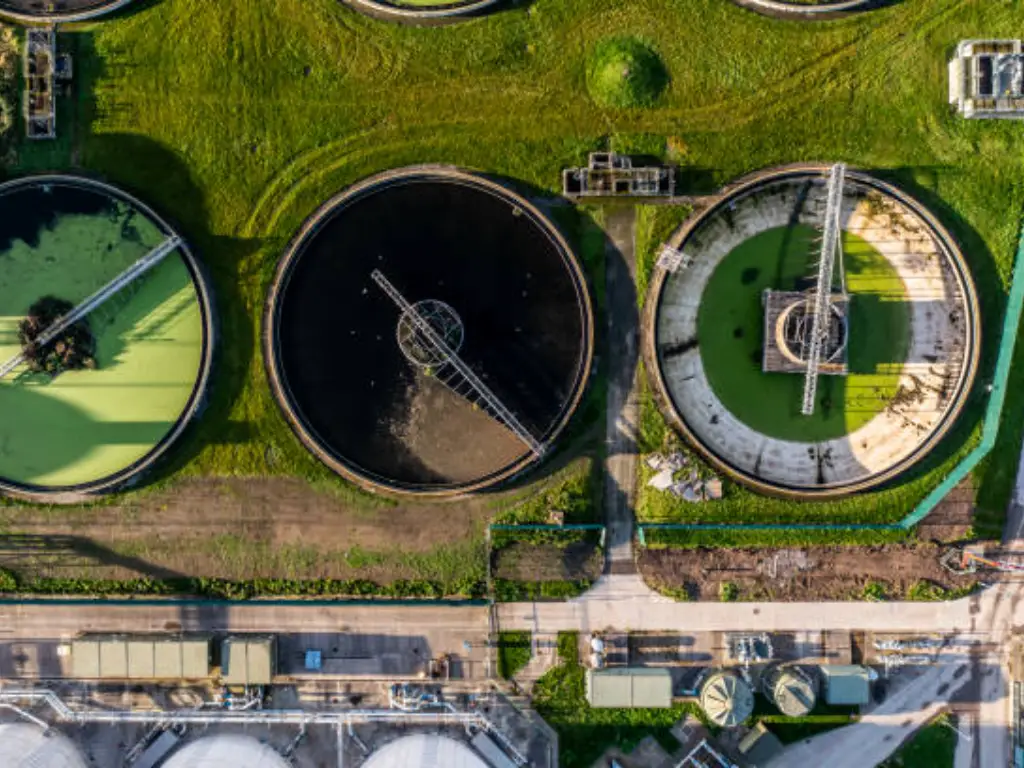What is Sewage Treatment?
Sewage treatment is the method of eliminating undesirable material from sewage, particularly domestic sewage to a level that the water can be discharged to the environment. It consists of several stages through which water is purified in a step-by-step manner to remove solids, organic materials, and pathogenic organisms. This water undergoes physical, chemical, and biological treatment in sewage treatment plants to meet the standards of the environment.

Why is it Necessary to Treat Wastewater?
- Safeguarding Public Health
Thus, the protection from diseases utilizing water sewage treatment is one of the most significant tasks in the sphere of public health. As WHO reports have shown, diarrheal diseases are estimated to contribute to about 1. 8 million people dying annually, of which 80% are as a result of waterborne diseases caused by impure water sources. Untreated wastewater is full of pathogenic bacteria, viruses, and parasites that are dangerous to human health, and that is why it is a very serious problem that can cause severe diseases such as typhoid fever, cholera, or dysentery.
- Protection of the Natural Environment
Sewage treatment is one of the most important processes that aim at protecting our natural environment. The ecological problems may be worsened by the effects of eutrophication and algal blooms that are caused by the discharge of untreated wastewater into natural water bodies due to the additional nutrients or pollutants that are introduced. These conditions lead to a decrease in oxygen levels in water bodies and thus impact aquatic life and the environment.
- Water Resource Conservation
Purified wastewater can be used for irrigation activities in agricultural farms or even drinking with improved treatment procedures among other uses, such as industrial processes, after recovering its quality. This recycling helps reduce the use of freshwater hence helping to conserve more water for future use and providing practical solutions to problems as a result of demand scarcity of safe drinking commodities available on the surface of the earth today.
How Sewage Reaches the Treatment Plant
| Stage | Detail |
| Sewage Collection | A good sewer system gathers wastewater from households, firms, and companies. |
| Transportation | Sewerage pipes and pumping stations are also used to transport all the accumulated wastewater to the treatment plants without any hitches. |
| Preliminary Screening | When it enters the system, sewage is passed through grit chambers and screens to remove all inorganic materials such as sand, gravel, or any other material that may further damage the process equipment in the later stages. |
| Flow Control and Management | Where gravity is lacking, some of the pump stations are placed at some distance to pump sewage so that there is a continuous supply to the treatment plant. |
| Final Delivery to Treatment | The system is intended to maintain a steady and controlled rate of wastewater flow to the treatment plant for further treatment and purification. |
Role of Valves in Sewage Treatment
Sewage treatment plants are important in the treatment of wastewater through several processes that are systematically applied in the removal of pollutants. Each treatment stage is designed to treat water in a sequential process to get rid of pollutants before the water is discharged into the environment or for reuse.
Ball Valves: Precision Control and Isolation
Valves are important in the proper functioning of sewage treatment plants and their efficiency. Ball valves are used to regulate the flow of water and sludge in the treatment process with great accuracy. They are made of a round ball with an aperture in the center of the ball that is free to turn within the valve body to either open or close the valve. This basic construction makes ball valves suitable for use in any process that needs dependable isolation and control of the flow.
Ball valves are employed in the STPs in different processes including the inlet control of the sewage, distribution of water between the different stages of the treatment process, and the outlet control of the treated water. They are long-lasting and easy to maintain, which makes them ideal for application in wastewater treatment where they come into contact with corrosive materials. Ball valves are usually constructed from stainless steel or PVC and offer a very secure shut-off even after long periods of use, thus eliminating leakage and adding to the efficiency and safety of the treatment process.

Butterfly Valves: Efficient Flow Regulation
Butterfly valves are widely used in sewage treatment plants where they are used to regulate flow in large diameter pipes. These valves consist of a round disc that rotates in a central axis to control flow. When the disc is aligned with the flow, the valve is fully open; when the disc is perpendicular to the flow, the valve is closed. This design makes it possible to control the flow of fluids easily and this is important where space is an issue or where frequent changes are required.
In wastewater treatment, butterfly valves are used in aeration basins where air or oxygen is required for biological treatment. They are also used in sludge processing where flow control is critical in the efficiency of the process. Coming in different types of material such as stainless steel or rubber lined, butterfly valves can be ordered to suit the requirements of a particular treatment plant. They are very essential in the processing of wastewater because of their flexibility and efficiency.
Main Phases of Sewage Treatment
Sewage treatment plants are employed in the treatment of wastewater by some processes which are systematically applied in the elimination of pollutants. All the treatment stages are oriented to reduce the pollutants to the level of environmental quality before the water is discharged or recycled.
Pretreatment: Removing Large Debris
The first process of wastewater treatment is pre-treatment and it aims at the removal of objects that are large enough to cause damage to other stages of treatment or damage the equipment. Sewage that gets to a treatment plant is first filtered through screens that assist in the removal of large items such as rags and sticks. It then flows through grit chambers where small particles like dirt, sand, gravel, coffee grounds, and eggshells are deposited by sedimentation and settle at the bottom. Its main role is to safeguard plant structures and it enhances the efficiency of the subsequent processes.
Primary Treatment: Solid-Liquid Separation
In the primary treatment, the sewage is allowed to settle and the solid waste is then separated from the liquid part. Sewage is first treated in primary clarifiers where the major part of the solid material, including poop, settles at the bottom of the tank while the minor part such as grease and oils floats on the surface of water and is skimmed off. The primary sludge is thickened and often subjected to anaerobic digestion while the liquid (effluent) goes to the second stage of treatment. This step, also known as solid-liquid separation, is crucial in reducing the organic load in the subsequent stages hence enhancing the efficiency of the treatment.
Secondary Treatment: Biological Breakdown
The second type of treatment is the secondary treatment or the biological breakdown in which microorganisms are used to decompose the organic matter in the wastewater. In aeration basins, air is brought into the wastewater to feed these microorganisms which in turn feed on the organic pollutants and give out carbon dioxide, water, and cells. The mixture then flows to secondary clarifiers where the biomass or the secondary sludge sinks at the bottom and reduces 80-90% of human waste and other solids. This stage is important in the process of reducing the amount of organic matter to acceptable levels before the final treatment in the tertiary treatment stage.

Tertiary Treatment: Filtration and Disinfection
The last process of water purification is the tertiary treatment which is aimed at the removal of very fine suspended particles, nutrients, and pathogenic organisms. This process may include filtration where water is treated with sand or activated carbon and purification through chlorination, UV treatment, or ozonation. This stage makes the water safe for discharge into natural water bodies or for reuse in other activities such as irrigation and industrial uses.
Mitigating Hazardous Elements in Wastewater
In a survey conducted among sewage plants, the elimination of toxic chemicals from water has been rated as the most crucial activity. Such wastes include metallic wastes, chemical wastes, and organic wastes such as pesticides and other organic pollutants which are released into the river by industrial effluents. If not well managed, these contaminants, specifically heavy metals, can be hazardous to the environment and the health of people.
To achieve this, treatment plants use the following advanced processes:
Coagulation: This process involves the addition of coagulants which are substances that are mixed with the water and act with dangerous particles to form bigger flocks that can be easily eliminated.
Filtration: After coagulation, the wastewater is then passed through filters such as activated carbon filters whose function is to remove the remaining pollutants, particularly the organic ones.
Advanced Disinfection: Additional safety also entails more cleaning and disinfection than is done in normal circumstances. Some of them are ozonation and ultraviolet (UV) treatments, among others that are used to remove any toxic substances or pathogens that may remain.
Revolutionizing Wastewater Treatment: Modern Solutions
The field of wastewater treatment is developing very fast and modern technologies are being used to enhance the efficiency, sustainability, and efficacy of the sewage treatment plants. This progress is important as the demand for clean water rises across the world.
- Advances in Biological Treatment
Biological treatment has been among the subfields that have experienced a lot of innovation. The use of specific bacteria that are capable of degrading large molecules of organic matter has made processes like aerobic and anaerobic digestion more effective. As a result of this change, the approach to pollution removal has been enhanced and the sludge produced has been minimized hence low biochemical oxygen demand (BOD) and low cost of disposal and impacts on the environment.
- Enhanced Filtration and Disinfection
Also, filtration and disinfection systems have been developed to a great extent. New technologies such as membrane bioreactor (MBR) or ultrafiltration offer higher pollutant removal to guarantee that the treated water is of high quality. UV-C LED technology or AOPs, for instance, are effective in eradicating pathogens without the need to use a lot of chemicals.
- Smart Sensors and Automation
Smart sensors in combination with automation are altering the way plants work. Sensors in the IoT make it possible to monitor and control the treatment processes in real time with high accuracy. Some of the parameters that can be controlled include chemical dosing rates or aeration levels and this can lead to an optimization of energy consumption levels as well as process efficiencies.
- Energy Efficiency and Resource Recovery
Sustainability and efficiency of energy and resources are the two major factors that are gaining importance in contemporary structures. Advanced technologies in anaerobic digestion produce more biogas that can be used to power the plant while nutrient recovery systems assist in the recovery of valuable nutrients such as nitrogen plus phosphorus to be used in circular economy systems.
Harnessing Sludge for Sustainability: Resource Reuse
In wastewater treatment, there are two processes, primary and secondary processes, which produce sludge and this sludge should be well managed for environmental and resource purposes. The sludge is then subjected to a further treatment process to minimize its volume, make it more stable, and make it amenable to disposal or re-use.
Anaerobic digestion is a critical step in the sludge management process in which microorganisms decompose organic matter under anaerobic conditions to produce biogas, mainly methane. This renewable energy source can be used for biogas power generation which sometimes powers the treatment plants increasing sustainability.
Treated sludge or biosolids can be reused based on the quality of the biosolids produced. Well-treated biosolids are nutrient supplements that are used in farming or the reclamation of land for sustainable use, serving as a valuable fertilizer. Where there are contaminants present, they may be disposed of through biosolids into landfills and this is regulated.
This strategy not only minimizes the effects on the environment through sludge management but also contributes to the development of a circular economy that turns waste into valuable resources, making it an important part of sustainable wastewater treatment.

Sustainable Solutions: Water Reuse for the Future
The necessity of water reuse in the utilization of wastewater is provoked by population growth, climate change, and industrial water demand. Modern wastewater treatment plants are now recycling their treated effluent as a product that is used in agriculture, industries, and sometimes in drinking water supply.
- Alleviating Pressure on Freshwater Resources
In areas like California, treated wastewater is used more and more in agricultural practices for irrigation, which helps save fresh water and, at the same time, does not harm the rivers and lakes. This conserves water and ensures food production in regions that receive little rainfall.
- Industrial and Potable Water Reuse
Many industries are now using effluent water for cooling, processing, and other purposes to reduce their impact on the environment as well as their expenses. Techniques such as reverse osmosis are available in the modern world, which can produce water of industrial standard. Furthermore, some regions are using water that has been treated to a very high level as drinking water by either blending it with conventional sources or by pumping it into aquifers to have a constant source of water.
- Medio ambiente and Economic Benefits
The reuse project also assists in reducing the effects on the environment due to the discharge of effluent, hence reducing pressure on water bodies that are already under pressure. It is a more sustainable and cheaper option than seawater desalination and therefore plays a role in the circular economy of water.
Conclusion: The Future of Sewage Treatment
Sewage treatment is an important aspect of the future and the future of sewage treatment is innovation and sustainability. As technology continues to develop, waste management facilities will be able to process more volumes of effluents with little effect on the environment. More emphasis should be placed on innovations such as safe drinking water recycling, resourcing, and sophisticated purification techniques that may assist in coping with population growth along with climate change.
To comprehend the complexity of the task and the importance of these processes for the protection of our precious fresh water and public health, one has to learn how a sewage plant works. Thus, we will guarantee the absence of pollution and the availability of clean water for consumption at present as well as many years in the future due to the implementation of improvement activities and the use of the latest technologies available to us.
Increase Your Wastewater Treatment Business with Dombor’s Valves
Improve your Wastewater Treatment Systems with Dombor’s reliable Valve solutions! Visit our wide collection of industrial valves that are manufactured to meet various industries’ needs. With the best technology, 20 years of experience, and a strong commitment to quality, Dombor provides effective and sustainable solutions for your activities. Get in touch with us today to transform your wastewater treatment practices and witness Dombor’s approach in every project.









